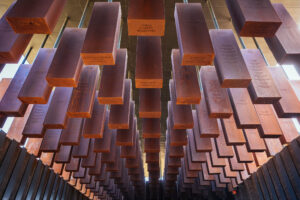
The start of the fall term is less than two weeks away! And while plans for our return to campus remain in flux, the excitement around new classes and new ideas is clearly in the air. Autumn, thankfully, hasn’t quite come yet to Minnesota, but it’s definitely on the horizon.
But we shouldn’t give up quite yet on the idea that we might finish one more book before life becomes Zoom lectures, exams, and grading. (I’m only half-way through War and Peace, but for those of you who’ve read it, Pierre has just had a realization about whom he really loves, after her long illness. It’s so exciting!)
As you’ll see from the contribution below from our colleague Dr. Blake Couey, and recalling that of Dr. Cooper from some weeks back, a number of our faculty have been reading and reflecting on the racial issues that have been with out nation since it’s founding, and the intricate and nuanced ways they’ve intersected with political and religious life.
I’ve been reading works about race and racism and Christianity. Earlier this summer, I read James Cone’s The Cross and the Lynching Tree. It explores the failure of white pastors and theologians to address lynching as a theological problem, despite obvious similarities between lynchings and Jesus’s crucifixion.
I’m about to start reading a new book by my graduate school colleagues Nyasha Junior and Jeremy Schipper. Called Black Samson: The Untold Story of an American Icon, it’s about African-American reception of the biblical character Samson. I’ve also started a Facebook page called “Poetry & Race,” which discusses work by poets of color. Many of these poems engage religious themes, including Claude McKay’s “The Lynching” or Marcus Wicker’s “Conjecture on the Stained Glass Image of White Christ at Ebenezer Baptist Church.”
Relatedly, I’ve been thinking a lot about race and religion, especially ways that the Bible has been used both to support and oppose racism. For example, there’s some interesting overlap between polemics against images of deities in the Hebrew Bible and current discussions about statues of Confederate leaders and other white supremacists. I’m also exploring how the biblical book of Isaiah was used by North American abolitionists in their arguments against slavery.
Finally, I’ve been working on the Atlantic’s free daily crossword almost every day this summer. They get harder throughout the week, and many of the clues involve really fun wordplays.